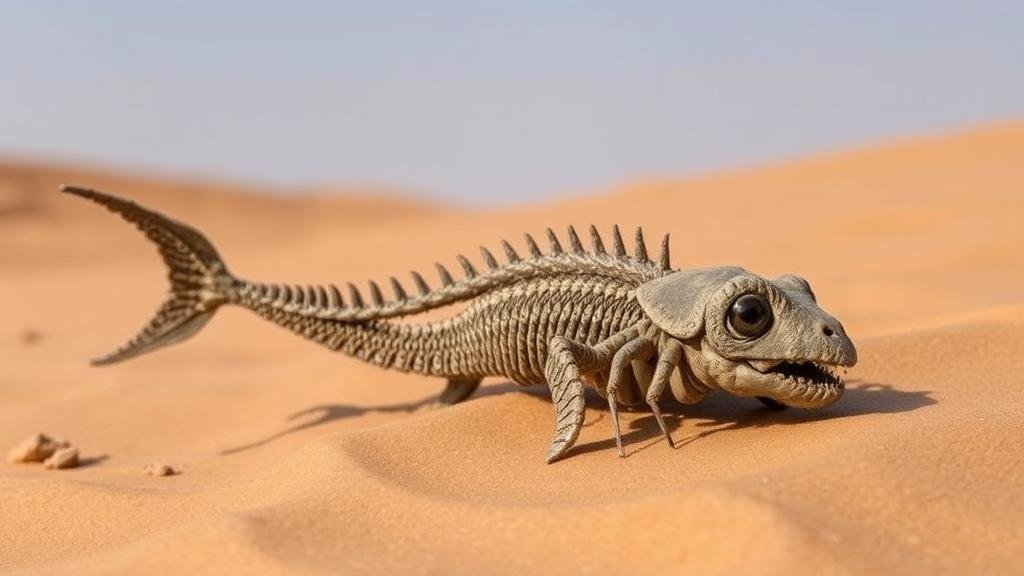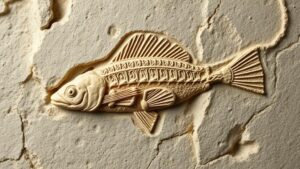The Lost Fossil Fields of the Sahara: Discovering Ancient Sea Creatures in Desert Sands
The Lost Fossil Fields of the Sahara: Discovering Ancient Sea Creatures in Desert Sands
The Sahara Desert, known for its vast sand dunes and arid climate, may seem an unlikely location for fossil discoveries. But, beneath its sun-scorched surface lies a treasure trove of ancient marine fossils, primarily remnants of creatures that once thrived in a vast inland sea. This article explores these lost fossil fields, detailing what rockhounds and mineral collectors can discover, the significance of these findings, and how to search for fossils effectively in this challenging environment.
The Geological Significance of the Sahara
The Sahara Desert covers approximately 9.2 million square kilometers, making it the largest hot desert in the world. Its geological history is far more complex than its current arid appearance suggests. During the Cretaceous period, about 145 to 66 million years ago, parts of the Sahara were submerged under the Tethys Sea, teeming with diverse marine life. Sedimentary processes during the subsequent geological epochs encapsulated these organisms in sedimentary rock layers, preserving their remains for millions of years.
Types of Fossils Found in the Sahara
The fossil fields of the Sahara yield a variety of remarkable specimens. Some of the most notable fossils include:
- Ammonites: These coiled cephalopods, which lived from around 400 million to 65 million years ago, can be found across North Africa. Their distinctive spiral shells are prized by collectors.
- Fossilized Fish: Specimens of ancient fish such as the extinct Diplomoceras maximum provide insights into past aquatic ecosystems.
- Shard Fossils: Remains of marine reptiles, like the nothosaur and mosasaur, have also been discovered, indicating larger predatory species inhabited these ancient waters.
- Coral Fossils: These fossils reflect the diverse ecosystems that existed in the shallow waters of the Cretaceous period.
Scientific Discoveries and Importance
The discovery of fossils in the Sahara has significant implications for understanding the Earths history. For example, a 2012 study led by paleontologists unveiled that some formations in Algeria contain fossils that document the transition of fish to land-dwelling animals. Such findings contribute to our understanding of evolutionary biology and paleoenvironments.
Also, fossils provide insights into climatic shifts over millions of years. Analysis of these remains helps scientists infer the conditions of ancient climates and predict future environmental changes.
Practical Tips for Rockhounds and Mineral Collectors
For rockhounds eager to explore the fossil fields of the Sahara, preparation is essential. Consider the following tips:
- Research Thoroughly: Before heading out, familiarize yourself with the types of fossils you might encounter. Resources such as local geological surveys or scientific publications can be invaluable.
- Choose Appropriate Equipment: Invest in good-quality tools like hammers, chisels, and safety glasses, as well as containers for safely transporting your finds.
- Plan for Weather Conditions: The Saharas weather can be extreme. Always check weather forecasts, be prepared for the suns heat, and bring ample water.
- Collaborate with Local Experts: Engaging with local fossil hunters or geologists can enhance your experience, provide insights into the best locations, and foster responsible collecting practices.
Conclusion
The Sahara Desert, often dismissed as a barren landscape, is a critical site for paleontological research and fossil hunting. With diverse marine fossils echoing an ancient seas past, this region presents exciting opportunities for rockhounds and mineral collectors alike.
By understanding the geological backdrop, identifying significant types of fossils, and following best practices for collecting, you can embark on a rewarding adventure in the lost fossil fields of the Sahara. With each discovery, you contribute to the broader narrative of Earths history and the marvels that remain hidden beneath the sands.


